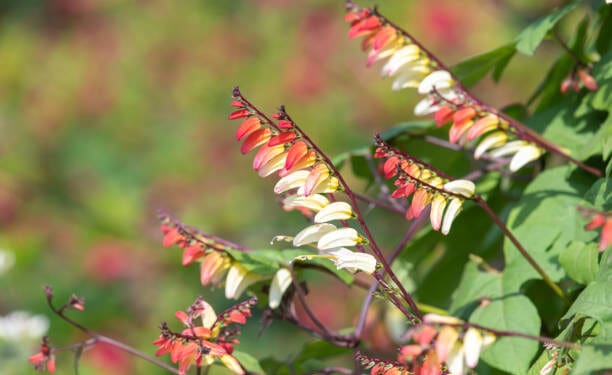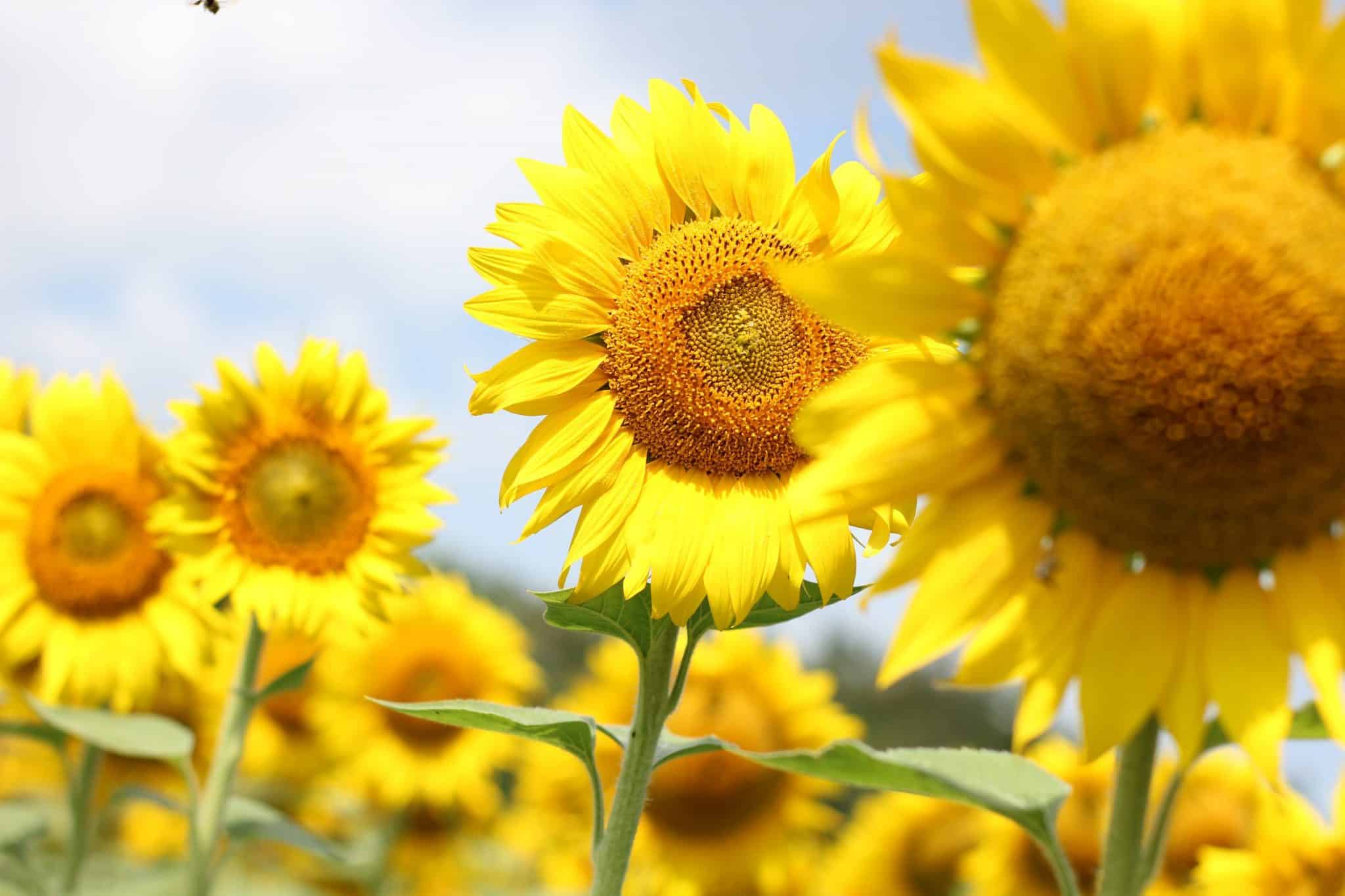Mini Lobata, scientifically known as Ipomoea lobata, belongs to the Convolvulaceae or morning glory family. It is a beautiful flowering plant that has a striking, funnel-shaped flower with colors that range from deep red, to yellow and cream, usually running in a pattern that resembles the Spanish flag. This cheerful flower usually grows as an annual, and often reaches up to 16 feet tall, making it a great choice for trellises and screening unsightly fences. The leaves are usually three lobed, and are vibrant and striking green in color.
How to Plant and Grow Mini Lobata
Mini Lobata is quite easy to grow and maintain, making it a popular choice among home gardeners. All it requires to reach its full potential and achieve its colorful, cascading blooms are a location with full sun, preferably in well-draining soil, regular watering, and regular fertilization.
When planting Mini Lobata, make sure the soil pH is not too high or low. A pH level of 6.5 – 7.5 is ideal, although they are pretty tolerant of a wide range of pH levels. Plant in spring when provided the right conditions and the right temperature.
In drier climates where rainfall is scarce, Mini Lobata will need extra water. It will also require protection from strong winds, as the tall stems and heavy blooms can cause the plant to become top-heavy and break. For optimal growth and flowering, sun is essential as well, so ensure that the plants get a minimum of six hours of direct sunlight a day.
Meaning and Symbolism
Mini Lobata has long been associated with a variety of meanings and symbolism. The cheerful colors of the bloom are often associated with joy, happiness and celebration, making Mini Lobata a popular flower for decorations on special occasions. The unique shape of the flower blooms can also little resemble a heart, which can be taken as a lovely romantic gesture! Additionally, due to its adaptability and ease of growth, Mini Lobata can also represent resilience and stamina.
History, Mythology, and Religious Significance
Mini Lobata has a long history that’s spread across cultures and continents. Ancient Greeks used it as a symbol of death, whereas the Romans associated it with the ‘stamen’, or the male reproductive organs. The French believed it held sensuality, while in India, it’s strongly associated with Krishna.
In Christianity, the trumpet of the Mini Lobata is said to represent Jesus’ call to make him known on the day he was crucified. Thus, when sending flowers as a gift, it can be taken as a sign of faith. In China and Japan, the flower also holds an important place in the culture, and is often used to signify the approach of summer.
Flower Varieties and their Defining Characteristics
Mini Lobata comes in several varieties, each with its own defining characteristics. The most popular varieties include:
Funnel Form Mini Lobata: This variety is the most common and is characterized by its classic, funnel-shaped flowers, typically in mixtures of yellow and red, with a cream-colored tip. This variety grows to about 2 feet and is best suited for zones 10 and 11.
Cup and Saucer Mini Lobata: This is one of the most striking varieties of Mini Lobata and is characterized by the large, cup-shaped flowers in bright yellow, sometimes with a hint of pink, and dark, reddish-brown nectar guides in the center. This perennial grows to a height of 2-3 feet and is best suited for zones 3-10.
Coral Creeper Mini Lobata: This is a rare and unique variety of Mini Lobata, characterized by its beautiful coral-red flowers, of which the inside deepens in pigmentation throughout summer. The foliage is typically bright green and the stems are twining. This variety reaches up to a height of around 12 feet, is best suited for zones 10-11.
How to Pot and Repot
To properly pot a Mini Lobata plant, it’s important that you choose a container that’s suitable for the size and weight of the plant. A good, sturdy container is best as Mini Lobata can get top-heavy when in full bloom. Fill the container to just below the drainage holes with regular potting soil, and press it down firmly. Plant the stem of the Mini Lobata in the center of the container, at the same depth as it was in the previous pot, and add more of the soil around it, tamping it down. Water the plant thoroughly and place it in an area with plenty of light.
Repotting a Mini Lobata is important to avoid root-bound conditions, and should be done every two to three years. Root bound conditions can cause stunted growth and may even kill your plant. Before repotting, remove any dead or diseased roots and trim back the healthy ones too, if they are overly long. Use a regular, well-draining potting soil and increase the size of the container by only two to four inches. Place the rootball carefully into the larger pot and press the soil lightly around it. Water thoroughly and keep the plant updated on a regular basis.
How to Prune
Mini Lobata is a very self-sufficient plant that can survive with minimal effort, but pruning is essential for healthy growth and to encourage a longer flowering period. Regular pruning is important as it helps maintain shape and form, stave off disease, and also encourages lateral growth, which creates more blooms.
The best time to prune is in late winter to early spring, just before the flowering period starts again. It is important to use clean and sterilized pruning equipment to minimise the risk of infection. During the pruning process, remove any dead or damaged stems and also any shoots that may have emerged from the base of the stem.
How to Propagate
Mini Lobata is relatively easy to propagate, and can be propagated both by stem cuttings and by sowing the small, round, olive-like seeds. When propagating by stem cuttings, select a healthy stem that has several nodes visible and cut just below the node closest to the end of the stem. The cutting should be at an angle, to allow it to take in more moisture. Dip the cutting in root growth hormone and then insert the cutting in well-draining potting soil. Place a plastic bag over the cutting to increase humidity and water sparingly. Within a few weeks, the cutting should form roots.
To propagate by seed, soak the seeds overnight in lukewarm water to soften the seed coat. Plant the damp seeds about a quarter of an inch deep and in well-draining soil. Cover the container with plastic to increase humidity and place in a bright, warm spot. Keep the soil slightly moist but don’t let it become soggy or flooded. The seeds should germinate in about 7-21 days.
Common Pests and Diseases
Mini Lobata is an incredibly hardy plant and usually does not suffer much from pests or diseases, though it can be prone to fungal leaf spots and mites. To control fungal leaf spots, thin the plant, allowing adequate air flow, and remove all diseased leaves as soon as they appear. Regular applications of neem oil to the affected area can help keep pests and diseases at bay.
Frequently Asked Questions
What is the blooming period of Mini Lobata?
Mini Lobata typically blooms during the spring to summer months and the blooming will last till late summer.
How should I prune Mini Lobata?
Mini Lobata should be pruned in late winter to early spring, just before the flowering period starts again, to promote healthy growth, encourage lateral growth for more blooms, and to stave off diseases. Remove any dead or damaged stems, as well as any shoots that may have emerged from the base of the stems.
Can Mini Lobata survive in colder climates?
Yes, Mini Lobata is quite hardy and can tolerate colder climates. It can survive short spells of temperatures as low as 0°F, as long as it is planted in well-draining soil and provided with adequate protection.
Table Fact Sheet
| Mini Lobata | Ipomoea lobata |
|---|---|
| Family | Convolvulaceae |
| Plant Type | Annual |
| Mature Size | 2-3 feet |
| Sun Exposure | Full Sun |
| Soil Type | Well-draining |
| Soil pH | 6.5 – 7.5 |
| Bloom Time | Spring to Late Summer |
| Flower Color | Red, Yellow, Cream |
| Hardiness Zones | 3-11 |
| Native Area | Asia |
What we love from Amazon this week
Buy these wonderful flowers directly from Amazon:















